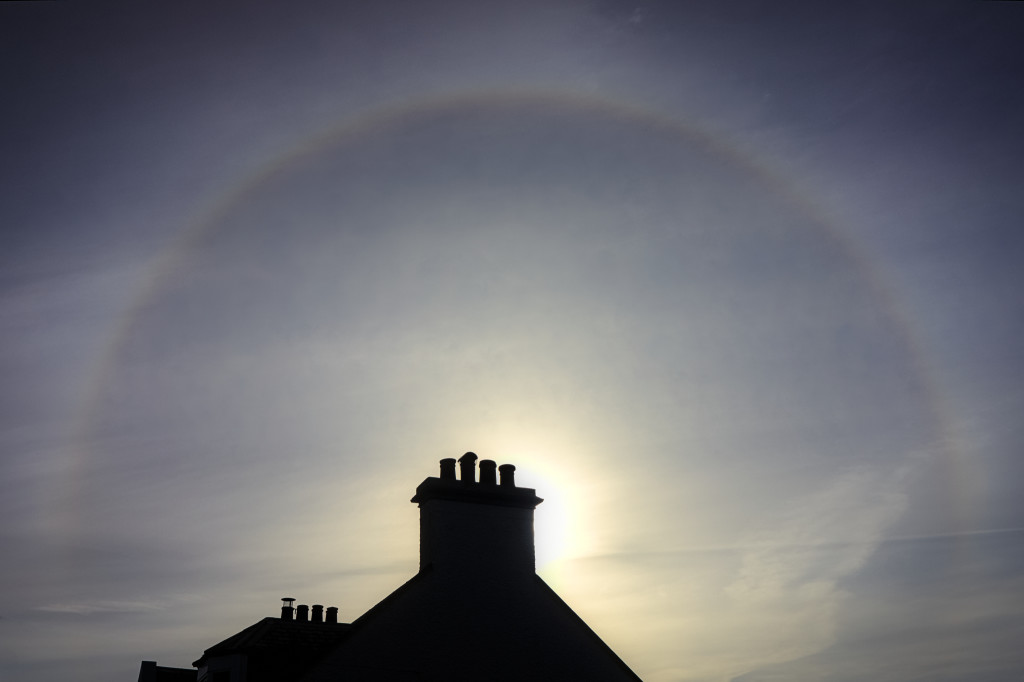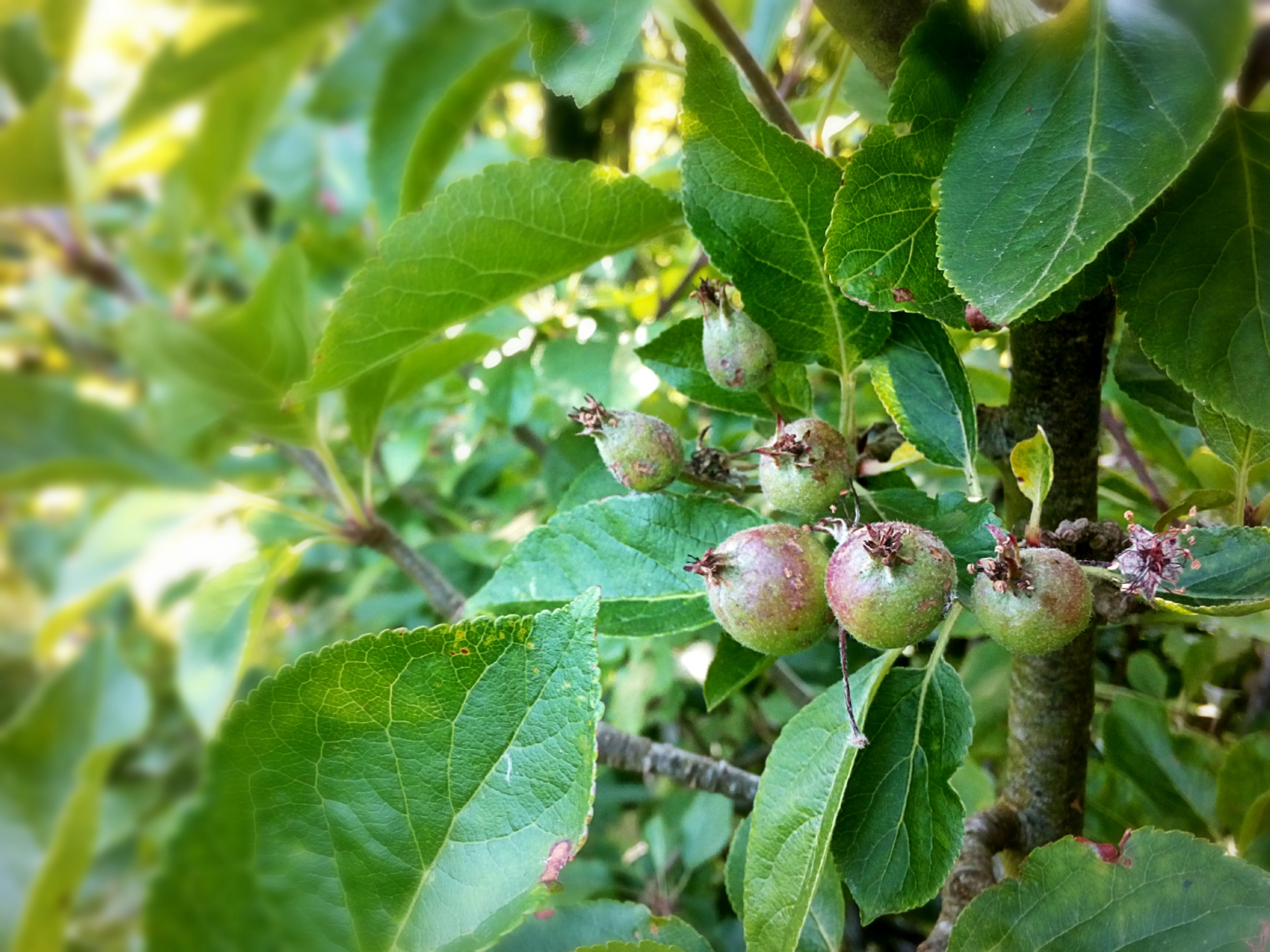Some of the first apples beginning to form on a tree in the garden.
Monthly Archives: June 2014
We all live in a…
…grey submarine. First time I’ve spotted a submarine out in the wild, so to speak. This one was lurking somewhere between Portpatrick and Northern Ireland yesterday lunchtime.
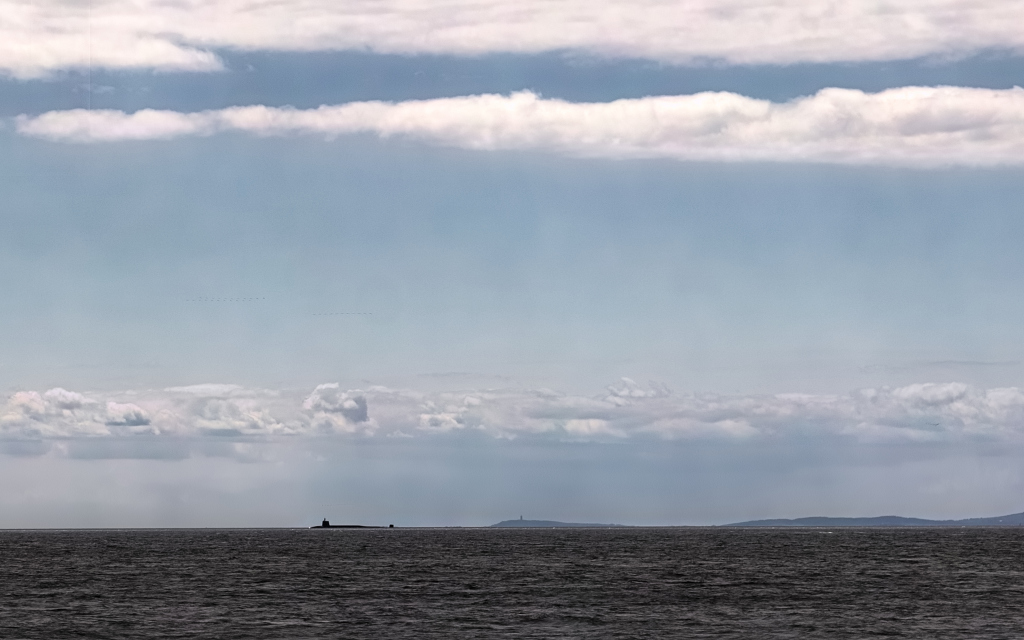
Incidental Impressions
Last Thursday tea-time, the Queen’s Baton came to Stranraer as part of the run-up to the Commonwealth Games. It was quite fun to watch the crowds milling around in anticipation – arguably made for more interesting street-photos than the baton itself.
Noctilucent Clouds
Noctilucent (“night-shining”) clouds are a rare phenomenon: the highest clouds in the atmosphere, at altitudes between 47-53 miles, consisting of tiny crystals of water ice about 100nm in diameter and requiring very cold temperatures to form. Not fully understood, they are a recently discovered meterological phenomenon with no record of their observation before 1885.
They also make a beautiful display of pale bright fibrous blue against the cobalt velvet of night…

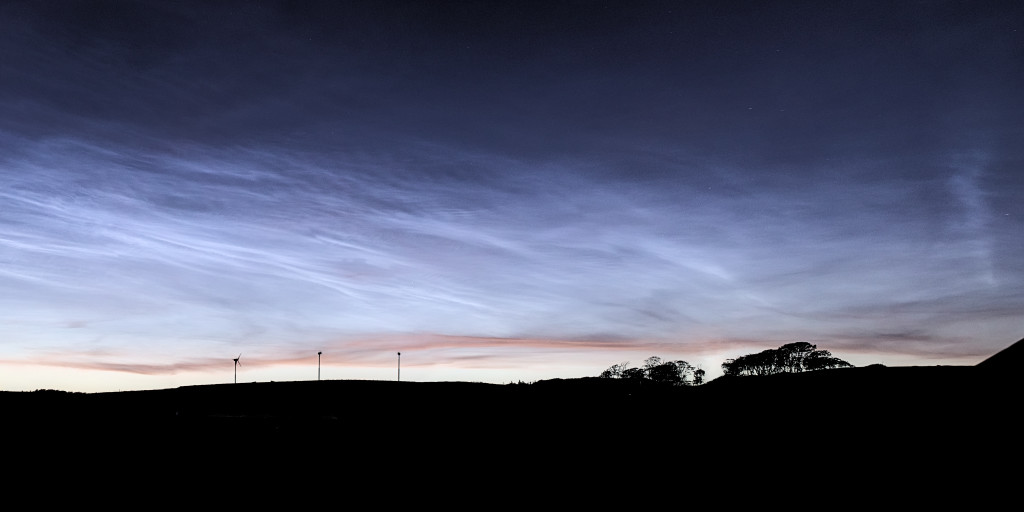
Two views, part of a stitched panorama.
Unidentified Flower
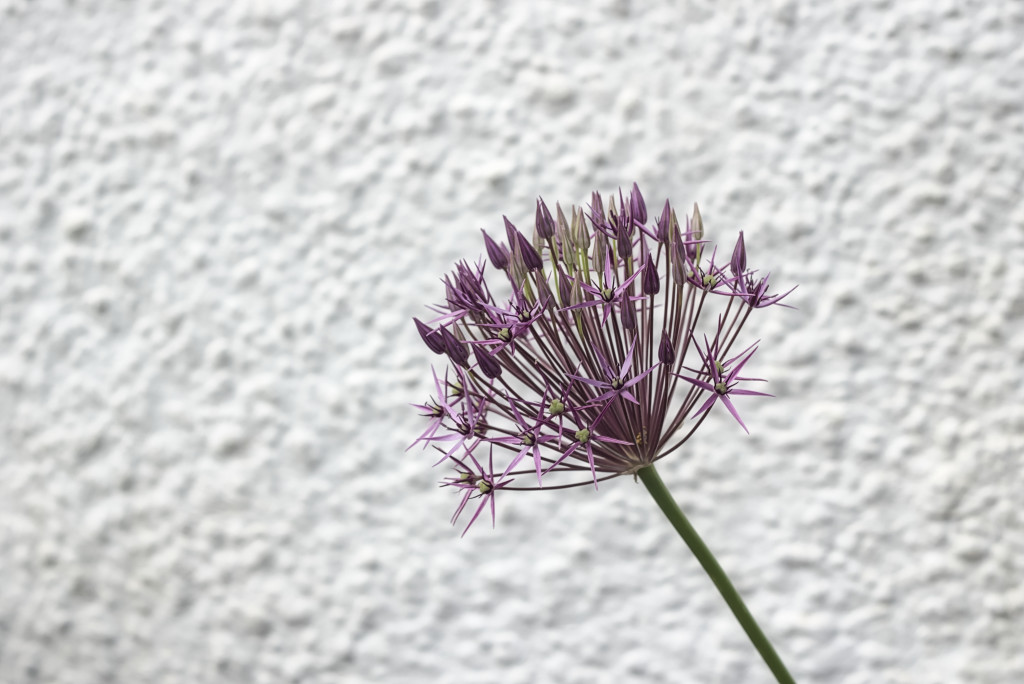
“Step 1
Determine whether the flowering plant is an annual or perennial, herbaceous, deciduous or evergreen.”
Huh? It’s pink/purple and has distinctive fine pointy petals in a 6-pronged star arrangement.
Does anyone know what it might be?
My Favourite Camera Settings
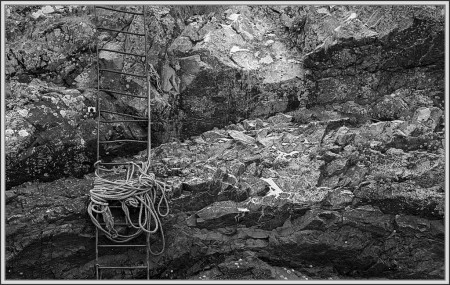
There’s one particular combination of camera settings I keep coming back to, that forms a base for almost all my work. Just in case anyone else is interested:
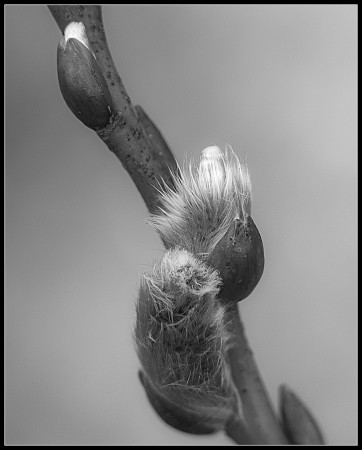
Great Success: a replanted willow tree budding, in black and white
Circular polarizer filter: for acting as an optical control of local contrast
RAW+JPEG: so I have vast amounts of data to process properly and a reference of what the camera thought of it, which can also be recovered more easily in case of SD-card corruption (rare, but not unknown)
Mode: maybe 90% aperture-priority (auto-ISO, auto-shutter speed), 5% shutter-priority (auto-ISO), 5% manual (because the NEX-7 fixes ISO to 100 by default); of these, unless I’m doing a long exposure, the aperture is the most distinguishing control between closeup and landscape work.
Processing: black & white, so I get to think in terms of shape and form and colour-contrast even if sometimes a scene is processed for colour.
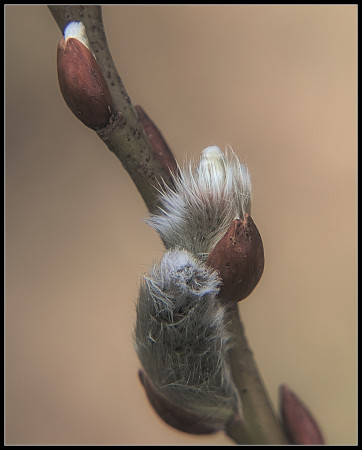
Great Success: a replanted willow tree budding, in colour
Metering: matrix/multi-zone metering, because it’s quite good enough, especially when coupled with a histogram on-screen
Compensation: normally +1/3rd EV for reasons of expose-to-the-right, improving the signal-to-noise ratio.
Shooting: HDR +/-1 EV
The shooting-mode is a new departure; not because I’ve suddenly started “doing HDR” (I’ve been open to that workflow on demand for several years), but rather because the ability to produce 30-40megapixel photos requires multiple input images. By shooting hand-held at high frame-rate I get enough image-data to combine upscaling (using super-resolution) with noise-reduction (using stacking). Full-speed burst-mode on the NEX-7 is a very fast 10fps, which leads to taking bursts of 5-6 images by the time I’ve thought I’ve got 3; the camera enjoys a wide dynamic range so even if the scene contrast doesn’t require HDR per se, there’s only a little difference in quality and using the HDR bracketing restricts the burst to 3 frames at a time.
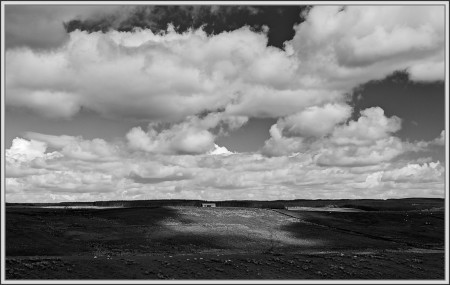
A little barn: scenery from Steel Riggs on Hadrian’s Wall
Solar Halo
It’s one of the more common atmospheric-optical phenomena, but I still had to stop and admire this ring of colour in the wispy clouds, sun hidden behind the chimneys.
